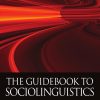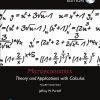The Canadian Writer is Workplace 9th edition by Gary Lipschutz, Sandra Scarry, John Scarry 0176831002 978-0176831004
$70.00 Original price was: $70.00.$35.00Current price is: $35.00.
Instant download Canadian Writer’s Workplace The after payment
The Canadian Writer is Workplace 9th edition by Gary Lipschutz, Sandra Scarry, John Scarry – Ebook PDF Instant Download/Delivery:0176831002 ,978-0176831004

Product details:
ISBN 10: 0176831002
ISBN 13: 978-0176831004
Author: Gary Lipschutz, Sandra Scarry, John Scarry
The Canadian Writer’s Workplace, Ninth Canadian Edition, is an easy-to-use solution that aims to inspire and guide students on the road to achieving clarity in their writing. With this product, students develop paragraph- and essay-writing skills that are crucial for success in their post-secondary career and beyond. This is a three-in-one solution that includes a review of basic grammar and sentence skills, covers writing steps and strategies, and ends with a selection of readings. Available in a printed text format and as an ebook within MindTap, our online learning platform, everything your students need to build confidence in their written communication skills is between two covers!
Table of contents:
Chapter 1 Parts of Speech: Overview
Quick Quiz
1. What Are Nouns?
2. What Are Pronouns?
3. What Are Adjectives?
4. What Are Verbs?
5. What Are Adverbs?
6. What Are Prepositions?
7. What Are Conjunctions?
8. What Are Interjections?
9. What Are Articles?
Working Together: Puzzle Pieces and Sentence Parts
Chapter 2 Recognizing Subjects and Verbs
Quick Quiz
Why Should We Use Complete Sentences When We Write?
What Is a Complete Sentence?
How Do You Find the Subject of a Sentence?
Finding the Subject in Sentences with Prepositional Phrases
What Are the Other Problems in Finding Subjects?
How Do You Find the Verb of a Sentence?
Chapter Review Exercises
Working Together: Singling Out Subjects
Chapter 3 Solving Verb Problems
Quick Quiz
What Are the Principal Parts of the Irregular Verbs?
Avoiding Unnecessary Shifts in Verb Tense
What Is the Sequence of Tenses?
How Do You Use the Present Perfect and the Past Perfect Tenses?
What Is the Difference between Active and Passive Voice?
What Is the Subjunctive?
Other Problems with Verbs
Chapter Review Exercises
Working Together: Verbs, Not Verbiage
Chapter 4 Subject-Verb Agreement
Quick Quiz
Subject-Verb Agreement within the Sentence
Special Problems in Making Verbs Agree with Their Subjects
Chapter Review Exercises
Working Together: Magazine Mayhem
Chapter 5 Coordination and Subordination
Quick Quiz 1
Quick Quiz 2
What Is Coordination?
Combining Sentences Using Coordination
What Is Subordination?
Combining Sentences Using Subordination
How Do You Punctuate a Clause with a Relative Pronoun?
Chapter Review Exercises
Working Together: Practising Coordination and Subordination
Chapter 6 Correcting Fragments
Quick Quiz
Recognizing and Correcting Sentence Fragments
What Is a Fragment?
How Do You Correct a Fragment?
Don’t Confuse Phrases with Sentences
Making a Complete Sentence from a Fragment That Contains a Verbal
Chapter Review Exercises
Working Together: Editing Ad Copy
Chapter 7 Correcting Run-Ons
Quick Quiz
Run-Ons Are Not Long Sentences
What Kinds of Run-Ons Are There?
How Do You Make a Complete Sentence from a Run-On?
Chapter Review Exercises
Working Together: Plot without Run-Ons
Chapter 8 Parallel Structure
Quick Quiz
What Is Parallel Structure?
Chapter Review Exercises
Working Together: Practise Making Sentences Parallel
Chapter 9 Pronouns
Quick Quiz
Pronouns and Case
Pronoun-Antecedent Agreement
Missing, Ambiguous, or Repetitious Pronouns
Chapter Review Exercises
Working Together: Practise with Pronouns
Chapter 10 Modifiers: Misplaced and Dangling
Quick Quiz
What Are Modifiers?
What Are Misplaced Modifiers?
What Are Dangling Modifiers?
Chapter Review Exercises
Working Together: Modifiers Making the Difference
Chapter 11 Punctuation
Quick Quiz
Correct Punctuation: A Strong Indicator of a Writer’s Competence
The Eight Basic Rules of the Comma
Other Marks of Punctuation
Chapter Review Exercises
Working Together: Designing Punctuation Tests
Chapter 12 Capitalization
Quick Quiz
Ten Basic Rules for Capitalization
Chapter Review Exercises
Working Together: Designing Capitalization Tests
Chapter 13 Unit I Review: Using All You Have Learned
Editing Sentences for Errors
Editing Paragraphs for Errors
Working Together: Remembering Your Canadian Trip
Unit II: The Reading-Writing Connection
Chapter 14 Understanding What You Read
You Are Not Alone
Reading Strategies
1. Previewing
2. Taking Notes, Annotating, and Highlighting
3. Reading and Answering Questions That Follow the Reading
4. Rereading
5. Journalling
6. Reading Topic Sentences
7. Looking Up Words You Don’t Understand
8. Looking Up References Online That You Don’t Understand
Working Together: The Best Way to Learn Is to Teach
Chapter 15 Paraphrasing and Summarizing
Paraphrasing
Summarizing
Acknowledging the Author (or Attribution)
Avoid Unintentional Plagiarism
An Example of Plagiarism and Its Real-Life Consequences
Analyzing and Critiquing
Working Together: Summarizing Opposing Points of View
Chapter 16 Quoting
Text References: Quotations and Paraphrased Ideas
How Much Do You Quote?
Short (Integrated) Quotation
Longer (Block) Quotation
Analyzing the Quotation or Idea
Working Together: Celebrity Canadians
Chapter 17 Answering the Question
Understanding What Is Asked
Direct Answer to a Direct Question
How to Write Well under Pressure
Strategies for Answering Timed In-Class Essay Questions
Example of an Essay Question
Frequently Used Terms in Essay Questions
Using the Thesis Statement in Essay Questions
Practising Writing in Response to Reading
Working Together: Formulating Essay Questions
Unit III: The Writing Process
Chapter 18 The Four Stages of Writing for a Paragraph or an Essay
Stage One: Prewriting
Stage Two: Outlining (or Organizing)
Stage Three: The Rough Draft
Stage Four: Postwriting (Revising, Editing, and Proofreading)
Working Together: Prewriting Activities
Chapter 19 The Paragraph
What Is a Paragraph?
What Does a Paragraph Look Like?
What Is a Topic Sentence?
How Do You Find the Topic in a Topic Sentence?
What Is a Controlling Idea?
Choosing Your Own Controlling Idea
What Is a Supporting Detail?
Two Types
Qualities of Good Supporting Detail
How Do You Make Supporting Details Specific?
The Concluding Sentence
Sample Outline Format
Working Together: Controlling Ideas and Supporting Details
Chapter 20 The Essay
Writing Is a Skill
The Components of an Essay
Moving from the Paragraph to the Essay
A Third Format: The Preliminary Essay
Structure of the Preliminary Essay
Model Preliminary Essay I: Good Habits
Model Preliminary Essay II: Benefits of Marijuana
Features of the Essay
What Is a Thesis Statement?
The Introductory Paragraph
Using Transitions to Move from One Idea to the Next
The Concluding Paragraph
Titles
Sample Outline Format
Working Together: Education Endangered?
Chapter 21 Style
Beyond Sentence Skills
What Is Style?
Word Economy (Absence of Wordiness)
Clarity versus Big Words and Long Sentences
Formal Language
Active versus Passive Voice
Word Order
Sentence Variety
Breaking the Rules
Breaking Up the Text
Repetition of Words
Audience and Tone
Purpose
Consistency
Choice of Punctuation
Avoidance of Abstract Terms
Avoidance of Jargon
Working Together: Changing the Style of Peer Writing
Chapter 22 Revising and Editing
The Final Stage
Proofreading
The Right Conditions for the Tasks
A Sample Student Essay in Its Fourth Stage
Day Care
Preparing the Final Copy
A Student Essay in Progress: The Revised Version
Working Together: Revising and Editing Activity
Chapter 23 The Research Paper
The Research Paper
Standard Essay Structure
The Literary Research Essay
The General Topic Research Essay
Internet versus Library Research
Analyzing the Legitimacy of Online Sources
Using Quotations
Working Together: Finding Appropriate Sources
Chapter 24 Documentation
Documentation
Two Mandatory Parts of Documentation: Internal and End
American Psychological Association (APA)
Modern Language Association (MLA)
Sample Research Paper
Working Together: Documenting Sources
Unit IV: Writing Strategies for the Paragraph and Essay
Chapter 25 Argumentation
What Is Argumentation?
Argumentation versus Persuasion
Persuasive Appeals That Are Not Logical
Other Strategies for Argumentation
What Is Critical Thinking?
More Tools and Components of Argumentation
Underlying Assumptions
Analyzing the Intention of Argument: The Importance of Virtue
We Become What We Communicate
Argumentative Techniques
Common Fallacies
Writing the Paragraph of Argumentation
Model Paragraph: Clues of an Unhappy Ending
Developing Essays: Argumentation
Model Essay: Ophelia’s Terror
Working Together: Identifying Good and Bad Arguments
Chapter 26 Cause and Effect
What Is Cause and Effect?
Two Types of Cause and Effect Paragraphs or Essays
Developing Paragraphs: Cause and Effect
Model Paragraph: Recipe for Disaster
Writing the Cause or Effect Paragraph Step by Step
On Your Own: Writing Cause and Effect Paragraphs from Model Paragraphs
Model Paragraph: Titanic Blunders
Developing the Cause and Effect Essay
Model Essay: Whose Choice Is It, Anyway?
Working Together: Identifying Causes or Effects
Chapter 27 Comparison and/or Contrast
What Are Comparison and Contrast?
Developing Paragraphs: Comparison and/or Contrast
Two Methods: Point-by-Point and Block
Model Paragraph: The Freedom of Freelancing (I)
Model Paragraph: The Freedom of Freelancing (II)
Tips on Transitions: Like versus As
Writing the Comparison and/or Contrast Paragraph Step by Step
The Comparison and/or Contrast Essay
Model Essay: City Life Beats the Small Town Blues
Working Together: Reaching Consensus
Chapter 28 Process
What Is Process?
Developing Paragraphs: Process
Model Paragraph: Planning Your Presentation
Model Paragraph: Years in the Making
Coherence in Process: Order in Logical Sequence
Writing the Process Paragraph Step by Step
On Your Own: Writing Process Paragraphs from Model Paragraphs
Model Paragraph: Road to Restfulness
Model Paragraph: Waspy Ways
Writing the Process Essay
Model Essay: Replacing a Tire
Working Together: Campus Woes
Chapter 29 Description
What Is Description?
Developing Paragraphs: Description
Model Paragraph: Delicatessen Decor
Working with Description: Selecting the Dominant Impression
Model Paragraph: A Day in the Life … (I)
Model Paragraph: A Day in the Life … (II)
Working with Description: Sensory Images
Coherence in Description: Putting Details in Spatial Order
Writing the Descriptive Paragraph Step by Step
On Your Own: Writing Descriptive Paragraphs from Model Paragraphs
Model Paragraph: Mother Fortress
Writing the Descriptive Essay
Model Essay: A Monumental Experience
Working Together: The Hunt for a Roommate
Chapter 30 Definition
What Is Definition?
Developing Paragraphs: Definition
Model Paragraph: The Meaning of Myth
Writing the Definition Paragraph Step by Step
Developing an Essay of Definition
Model Essay: Love Hurts
Working Together: What Does the Cover Mean to You?
Chapter 31 Classification
People also search:
the canadian writer’s workplace
the canadian writer’s workplace 9th edition pdf
the canadian writer’s workplace pdf
a canadian writer’s guide


